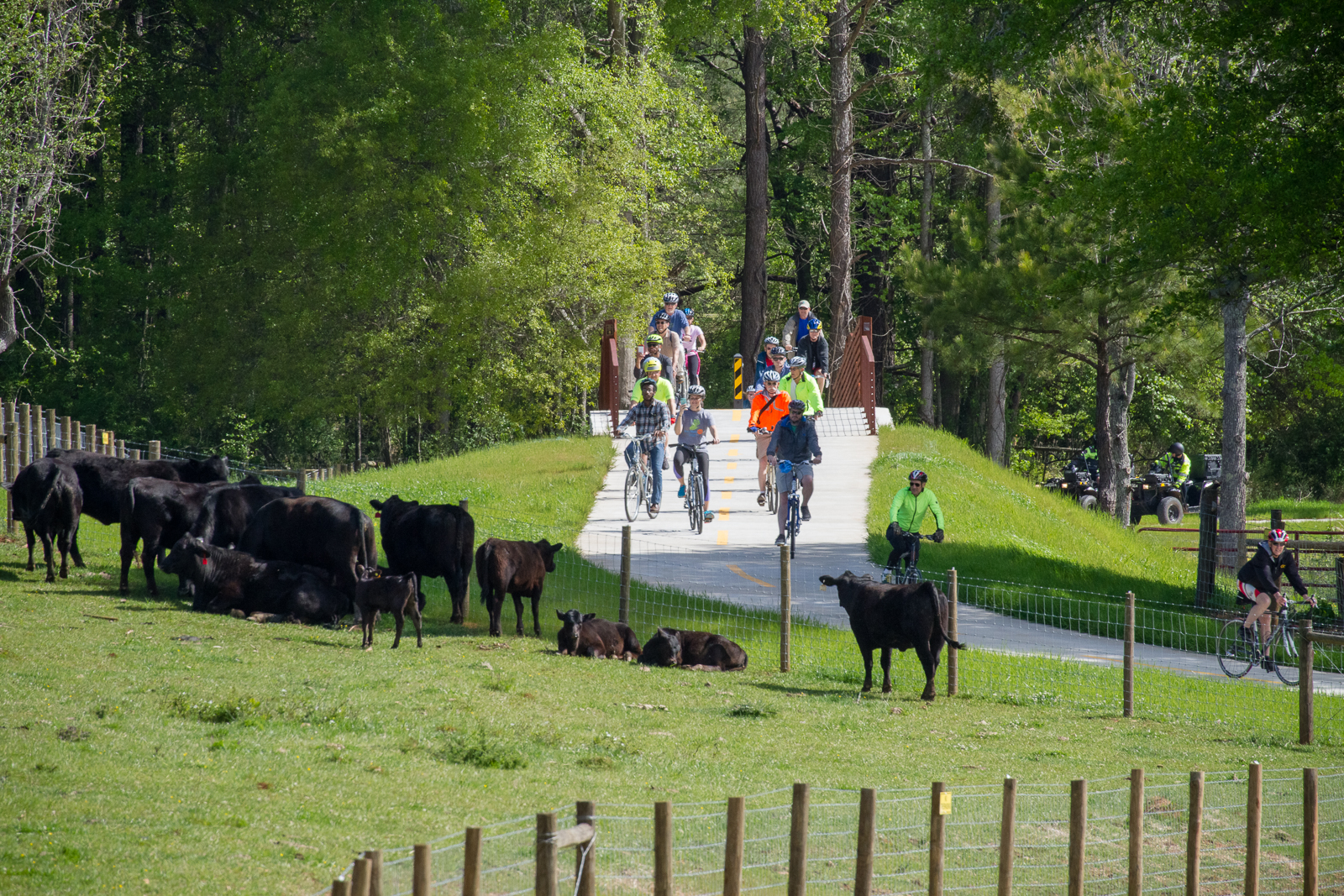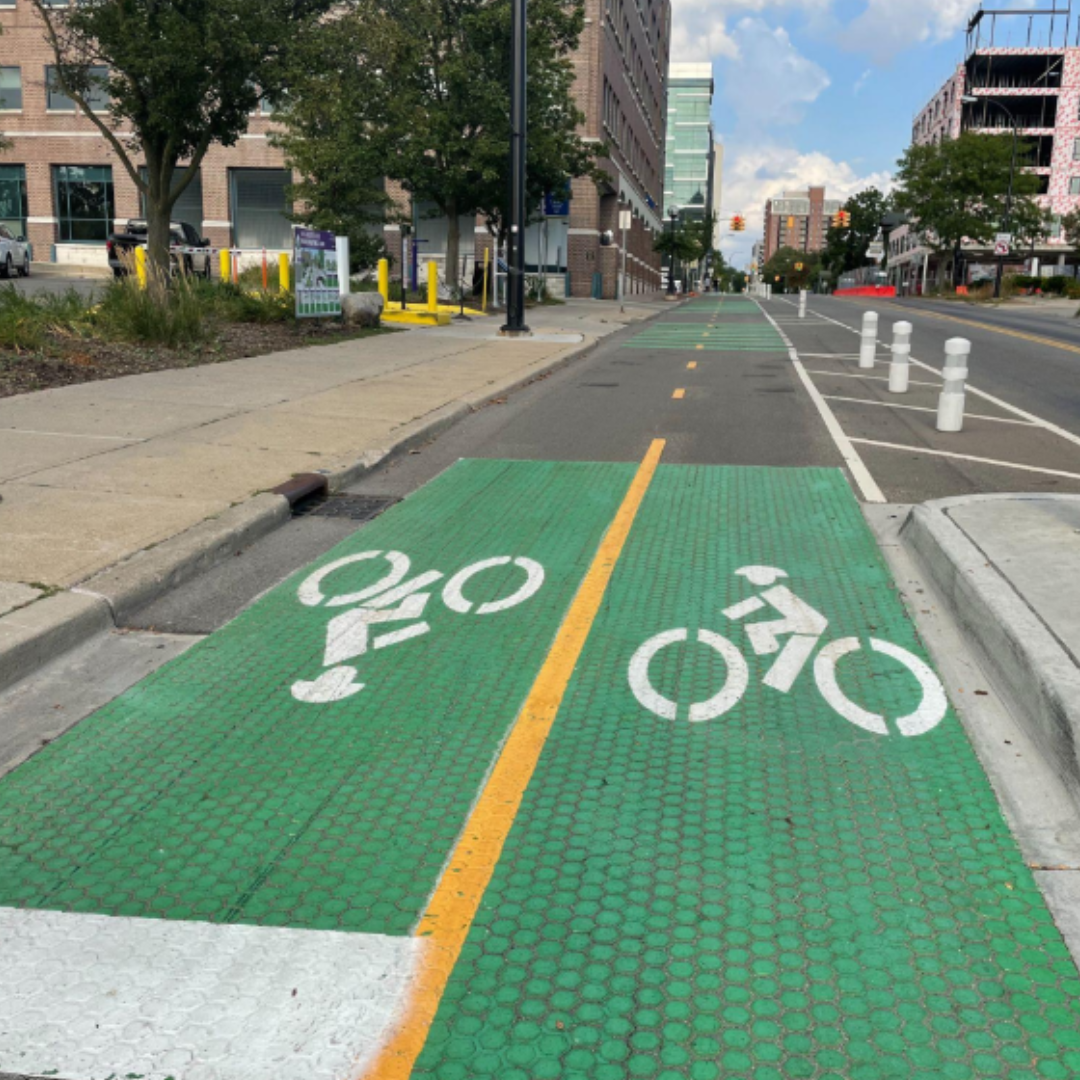DISCOVER YOUR LOCAL BICYCLING COMMUNITY
Find local advocacy groups, bike shops, instructors, clubs, classes and more!
Testimonials From Our Bicycle Friendly Community Program
The health, economic, and cultural benefits of bicycling make it common sense that Bicycle Friendly Communities (BFCs) are some of the most sought-after places to work and live. Through our BFC program, we have well-documented places that have made investments to improve cycling in the community, such as through safe bicycle infrastructure and connected bike networks, bike safety education and affordable bike share. These places that make investments in better biking attract new residents, visitors, economic growth and a stronger sense of community well-being.
Bicycle Friendly Communities are especially attractive to those who want or need to live a less car-dependent lifestyle. With the freedom to ride more, Bicycle Friendly Communities offer people the opportunity to easily and safely get around to jobs, school, shops, restaurants and other businesses and recreational facilities without ever pressing a gas pedal — meaning less car congestion and fewer carbon emissions, and making BFCs not only beneficial for the people who live in, work in and govern them, but beneficial to the planet as well.
For all the reasons above, a variety of house hunting tools include Bicycle Friendly Communities and similar measures in the criteria used to rank some of the top places to live. The League was pleased to work with MarketWatch last summer to bring our Bicycle Friendly Community (BFC) awardees of Silver-level and above to the MarketWatch Where Should I Retire tool.
Of course, the best evidence of the benefits of being a Bicycle Friendly Community lies in the word of BFC themselves. That’s why we ask each BFC applicant to tell us the most positive outcome of their community’s support for bicycling. Here are some of our favorite answers!
Thousand Oaks, California; Bronze
“Many baby boomers, Gen X, millennials, and Gen Z are interested in living and working in areas that support the desire for outdoor recreation opportunities, and to commute by bike or foot. By investing in bicycle and pedestrian trails that connect to recreation, retail spaces, bike lanes, and bike repair stations, local businesses have been able to attract those that want to live near and enjoy the city they work in. In turn, this younger workforce contributes to new businesses, events, and growth of the tax base.”
 Carrollton, Georgia; Bronze
Carrollton, Georgia; Bronze
“By far, the most positive outcome is the use our trail, the Carrollton GreenBelt, gets on a daily basis and how it changes the level of physical activity in town. We see parents out for a jog and kids following on a bike. We see three, or sometimes four, generations walking together. We see grandparents buying bicycles to take their grandkids for long rides. The trail provided people with the excuse to go out and enjoy the outdoors, and that excitement and empowerment is now part of the everyday life of Carrolltonians.”
New Haven, Connecticut; Silver
“As the League of American Bicyclists well knows, the greatest single word cyclists associate with riding a bike is freedom. By providing city residents additional mobility options we have provided additional freedom, and the freedom of mobility is a priceless commodity. With the increased freedom to navigate New Haven and the surrounding area more residents and guests are getting on bicycles, including Bike New Haven (bike share) bicycles, which provides the freedom of a bicycle without the financial commitment of bike ownership. By getting more people on bicycles the community is self-repairing damage to the environment, traffic congestion, traffic speeds, and quality of life for all residents, guests, and users of the road. We’ve seen the realization by skeptics that bicycle improvements are indeed community improvements for everyone.”
 Ann Arbor, Michigan; Gold
Ann Arbor, Michigan; Gold
“The most positive outcome of our community’s support for bicycling has been the rise in mode share of bicycle trips. More than one out of every 10 trips taken in Ann Arbor is a bicycle trip. The current statistic is twice as high as the statistic reported in the previous application and exceeds goals set by previous plans. Even further, 36% of all trips within Ann Arbor are made by walking, biking, or transit. Simultaneously, community support for bicycling has led to explosive growth in bicycle infrastructure in the past few years. The city has introduced multiple protected bikeways and a new tunnel to the extensive network of shared-use paths. These on-street and off-street networks are both heavily utilized by bicyclists. All of this information aligns with the City’s carbon neutrality goal for 2030. Looking at the big picture of Ann Arbor – our goals, and our current practices – it brings the city pride to say that our current practices are in line with our goals.” Read more on Ann Arbor’s BFC award on our blog.
Santa Monica, California; Gold
“The most positive outcome of our community’s support for bicycling has been tangible progress toward a sustainable community and economy. Santa Monica’s support for bicycling has created a successful system of mobility and empowerment in a time when the global call to reduce carbon emissions and improve physical health is clear. And business is good! The number of independent bike shops in Santa Monica has increased even as national numbers are decreasing. With a positive momentum toward active transportation and cycling, Santa Monica has weaned off the fossil fuel status quo in a very successful way. Instead of being trapped stagnant and burning fuel in gridlock traffic, our community has been granted bike lanes as pressure valves for mobility throughout the city and bikeshare for convenience with affordable options, giving any age and any ability the choice to continue moving at any time of the day, despite heavy congestion.”
Portland, Oregon; Platinum
“More than half of Portland’s commuters live in areas where the average bicycle commute mode split exceeds ten percent. More than one-third of Portland’s commuters live in an area where the average bicycle commute mode split is more than 13 percent. Overall, our city-wide mode split is approximately seven percent. Perhaps the largest positive outcome is that bicycling is the primary reason that congestion in Portland is being kept at bay despite a twenty percent increase in the number of Portland commuters between 2000-2014 (the last time we did the analysis). During that period, Portland added almost 55,000 new daily commutes. Had they all commuted to work at the same rate as Portlanders did in 2000, then our roads would have been overrun with more than 35,000 additional single occupancy vehicle commute trips. In reality, only 15,000 of them drove to work. The plurality of them–more than 18,000–bicycled to work.
This keeping of congestion at bay–with all that it offers for Portland’s livability, health, economy and minimizing greenhouse gas emissions–is perhaps the most positive outcome of Portland’s continuing support for bicycling.”
If you’d like to learn more about how to improve bicycling in your community or how to become a Bicycle Friendly Community, visit bikeleague.org/community. The BFC application, which has been enhanced with a new Equity and Accessibility section, more in-application resources and other updates, is now online and submissions for our Fall 2022 round of awards are due September 29, 2022.